Understanding the Crucial Role of Emotional Safety in Recovery
Emotional safety is a foundational element in the journey of psychological healing. It involves creating environments—both in therapy and everyday life—where individuals feel accepted, valued, and free to express their authentic selves without fear of judgment or rejection. This sense of safety fosters vulnerability, an essential component for exploring and resolving deep emotional wounds, especially those rooted in trauma. The significance of emotional safety extends beyond mere comfort; it influences neurobiological functions, emotional regulation, relationship dynamics, and resilience, thereby accelerating the healing process.
The Biological Foundations of Emotional Safety and Its Impact on the Nervous System
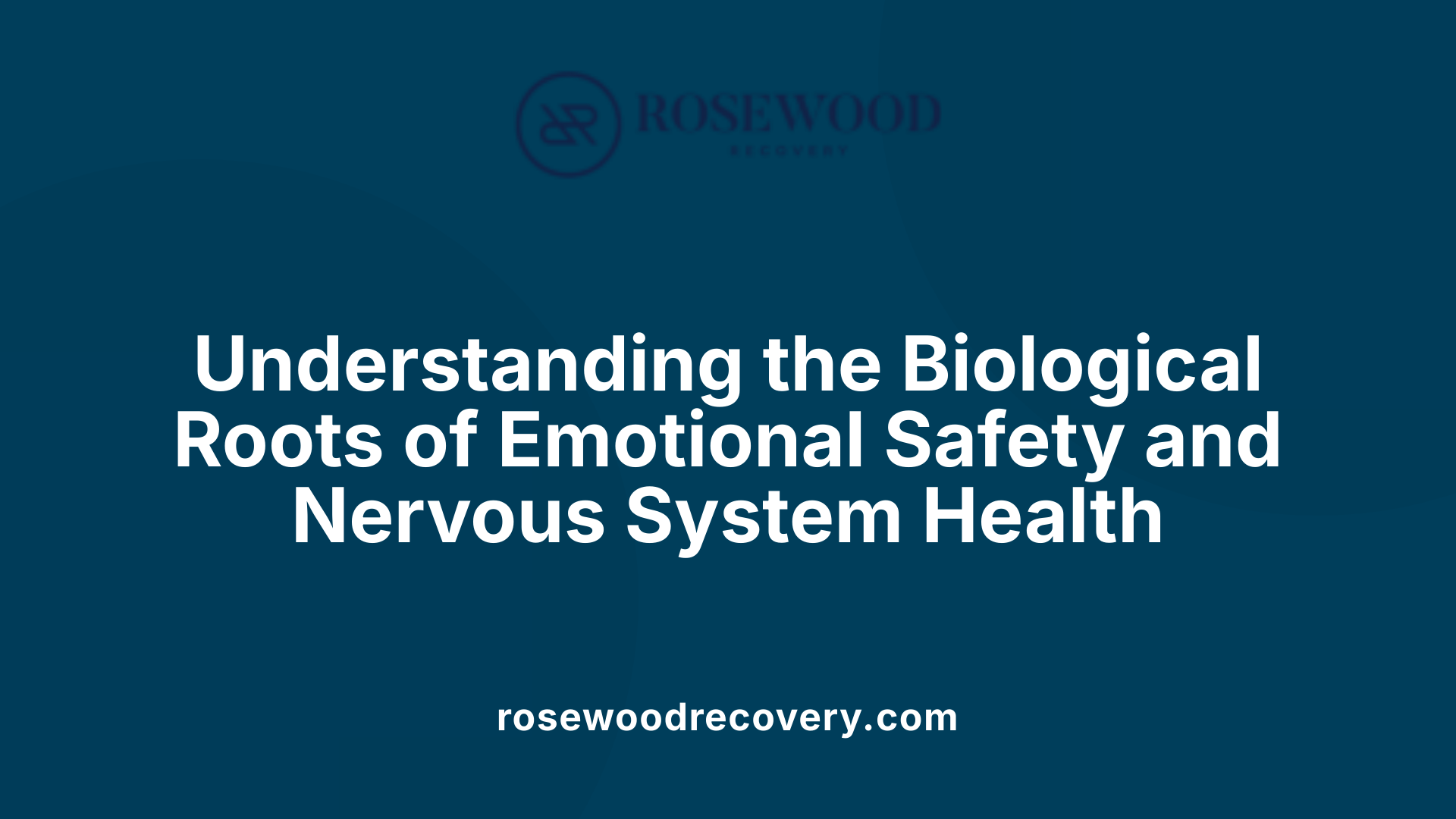
What is the importance of emotional safety in facilitating psychological healing?
Emotional safety is crucial for healing because it provides a secure space where individuals can freely express their true feelings without fear of judgment or rejection. This sense of safety allows the nervous system to shift into a calm, regulated state, which is vital for processing and integrating difficult emotions and memories.
When people feel emotionally safe, their bodies experience physiological relaxation, often characterized by reduced heart rate, lower blood pressure, and a relaxed muscular state. This relaxation not only eases physical discomfort but also enhances pain tolerance and emotional resilience. In therapy, emotional safety fosters trust and openness, enabling clients to explore traumatic memories and vulnerable feelings more effectively.
On a biological level, safety activates the parasympathetic branch of the autonomic nervous system, particularly through the vagus nerve. This nerve plays a significant role in promoting calming responses, often termed the 'rest-and-digest' state, which counters the fight-or-flight reaction triggered by perceived threats.
Neurobiologically, our brain's neuroception system constantly scans the environment for safety cues. When safety is detected, the brain signals the body to relax, helping to reduce hypervigilance and stress responses. This calming effect supports emotional regulation by preventing the nervous system from remaining in a heightened stress state, which can impair cognitive functioning and emotional health.
In essence, feeling safe at a biological level not only alleviates immediate stress but also creates the groundwork for long-term psychological healing. It enables the brain to rewire and form healthier emotional patterns, culminating in greater overall well-being and resilience.
Creating Safety in Therapy: Essential Techniques and Practices
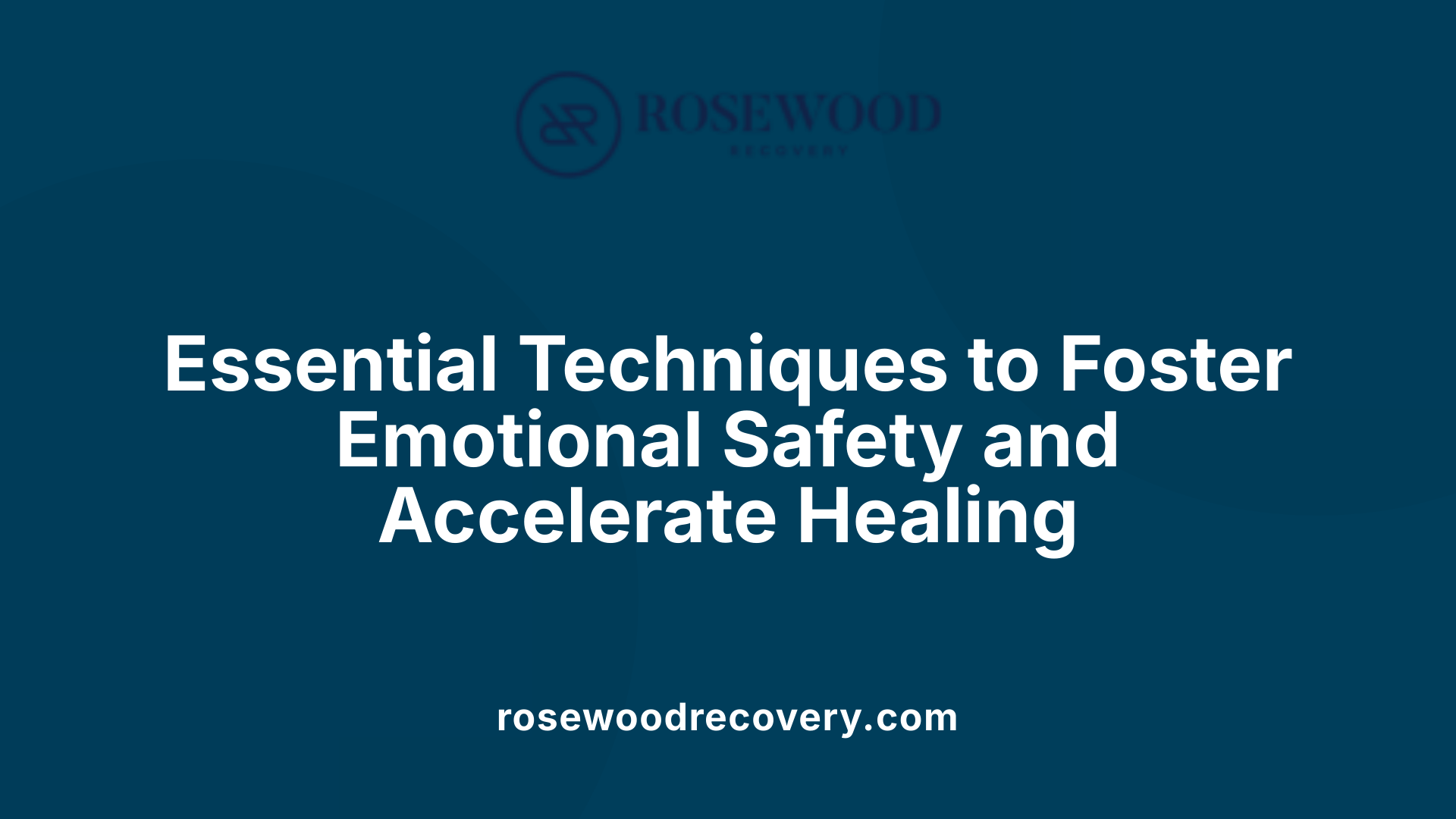
What are some techniques and practices that promote emotional safety and healing?
Promoting emotional safety and healing starts with creating an environment where individuals feel trusted, accepted, and understood. When people feel safe, they are more willing to be vulnerable, which is essential for effective therapy and meaningful relationships.
Active listening is a foundational practice—it involves giving full attention, reflecting, and validating clients’ experiences without judgment. Respecting boundaries and obtaining clear consent ensure that clients feel in control of what they share and experience, fostering trust.
Transparent communication is also vital. Being open about the process, goals, and limitations helps reduce uncertainty and build a sense of security.
In addition to relational practices, nervous system regulation techniques are essential tools. Breathwork exercises, such as slow, diaphragmatic breathing, can activate the parasympathetic nervous system, reducing stress and fear responses.
Grounding techniques, like focusing on the present moment through sensory awareness—touching an object, feeling textures, or listening to ambient sounds—help individuals stay connected to their body and prevent dissociation.
Simple sensory exercises, such as visualization or gentle movement, can also counteract hyperarousal. Physical activities like walking or yoga, and practices like progressive muscle relaxation, further promote relaxation.
Building trust is supported by consistency in interactions, transparency about therapeutic processes, and cultural sensitivity. Recognizing and respecting diverse backgrounds and perspectives fosters inclusivity, making therapy a safe space for everyone.
In summary, integrating active listening, boundary respect, nervous system regulation techniques, and cultural awareness creates a therapeutic environment that nurtures safety, supports emotional healing, and promotes resilience. These practices are applicable not only in therapy but extend to everyday relationships and workplaces, emphasizing the universal importance of safety and trust in human connection.
The Interconnection Between Emotional Safety and Trauma Reprocessing
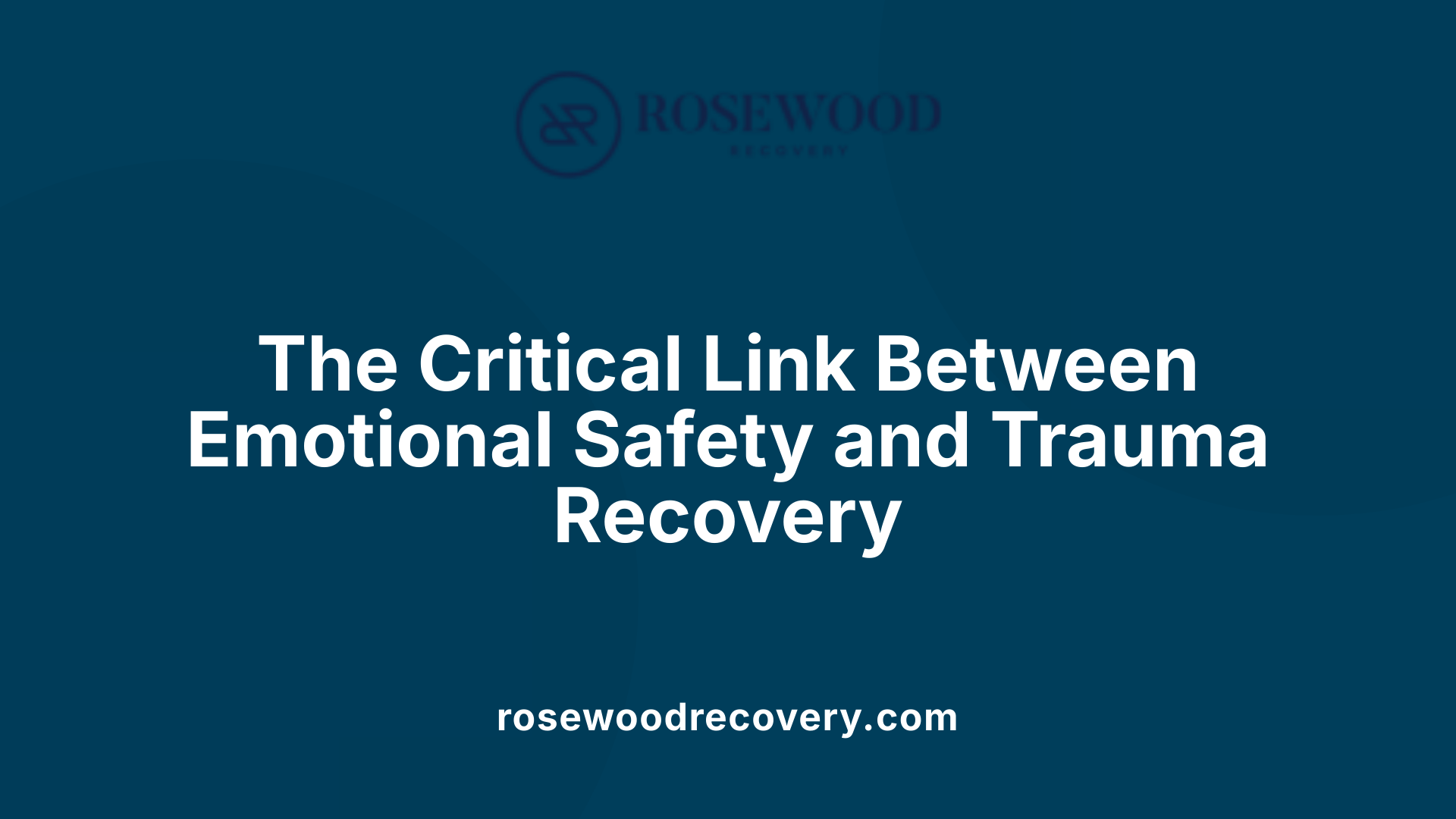
What is the relationship between emotional safety, body safety, and trauma reprocessing?
Emotional safety and body safety are closely linked when it comes to healing trauma. Both are essential in creating a secure environment that allows individuals to process painful memories and emotions without feeling overwhelmed. When a person feels physically and emotionally safe, their nervous system is more likely to relax, reducing hyperarousal and dissociation — common responses to trauma.
Grounding techniques and bodily practices play a vital role in establishing this safety. Mindfulness, somatic exercises, and relaxation methods help individuals reconnect with their bodies, calming stress reactions and promoting a sense of stability. Such practices enable clients to stay present, even when confronting distressing memories, without retraumatization.
Trauma therapies like EMDR (Eye Movement Desensitization and Reprocessing), SE (Somatic Experiencing), and AEDP focus heavily on establishing this foundational safety. EMDR, for example, uses guided eye movements and bilateral stimulation within a safe therapeutic setting to facilitate the reorganization of traumatic memories. This approach relies on the client's sense of safety to access and process difficult emotions effectively.
Overall, nurturing both emotional and body safety provides the stable platform needed for the nervous system to heal. The formation of safety in therapy allows clients to confront, integrate, and ultimately transform traumatic experiences, paving the way for recovery and resilience.
The Role of Emotional Safety in Accelerating Psychological Recovery
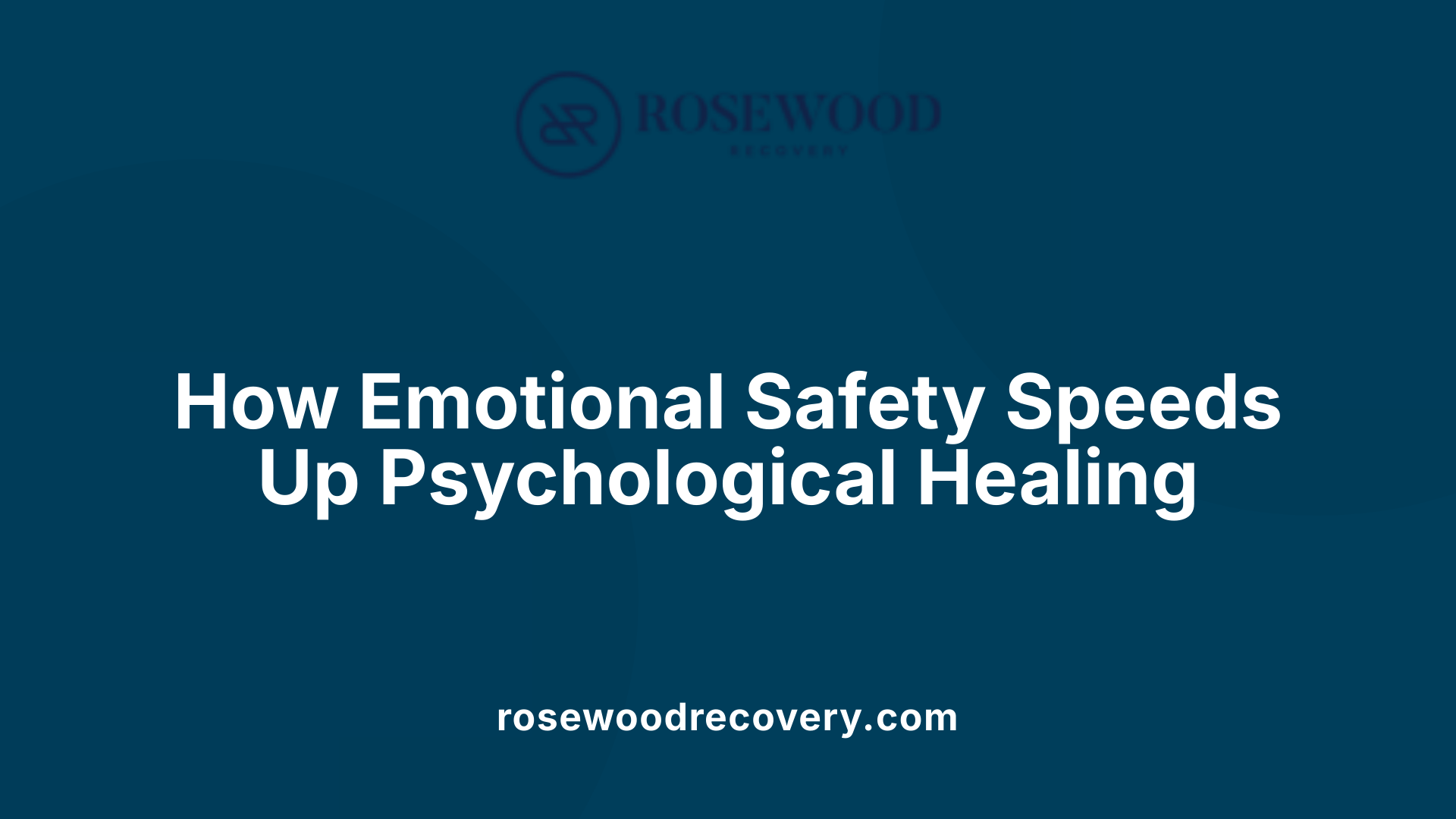
How does fostering emotional safety lead to faster and more effective psychological recovery?
Creating a sense of emotional safety is fundamental to speeding up and improving the healing process. When individuals feel genuinely accepted, understood, and valued in therapy, they are more willing to openly share their thoughts and feelings without fear of judgment or criticism. This openness facilitates the honest exploration of painful memories and emotions, which is essential for processing trauma.
Emotional safety helps rebuild trust—not only in the therapist but also within oneself. This foundation makes it easier to develop resilience and emotional regulation skills needed to manage triggers and reduce relapse into old patterns. When safety is established, clients tend to be more engaged and motivated, increasing their participation in therapeutic activities.
Moreover, a safe environment supports vulnerability, which is vital for authentic emotional expression and deep healing. It encourages the development of self-compassion as clients learn to treat themselves with kindness rather than self-criticism. This inward shift often results in quicker emotional shifts and more sustainable recovery.
Building a strong sense of community and connection further amplifies these effects. Feeling supported and validated helps clients internalize positive emotional experiences, strengthening their internal resources. Collectively, these factors combine to reduce resistance, diminish fear, and enable patients to access healing capacities more readily.
In summary, fostering emotional safety directly influences how fast and effectively a person can recover by reducing fears, reinforcing trust, enabling vulnerability, and promoting resilience. These elements contribute to a deeper engagement in therapy, which accelerates healing and fosters long-term growth and well-being.
Fostering Resilience and Post-Traumatic Growth Through Safety
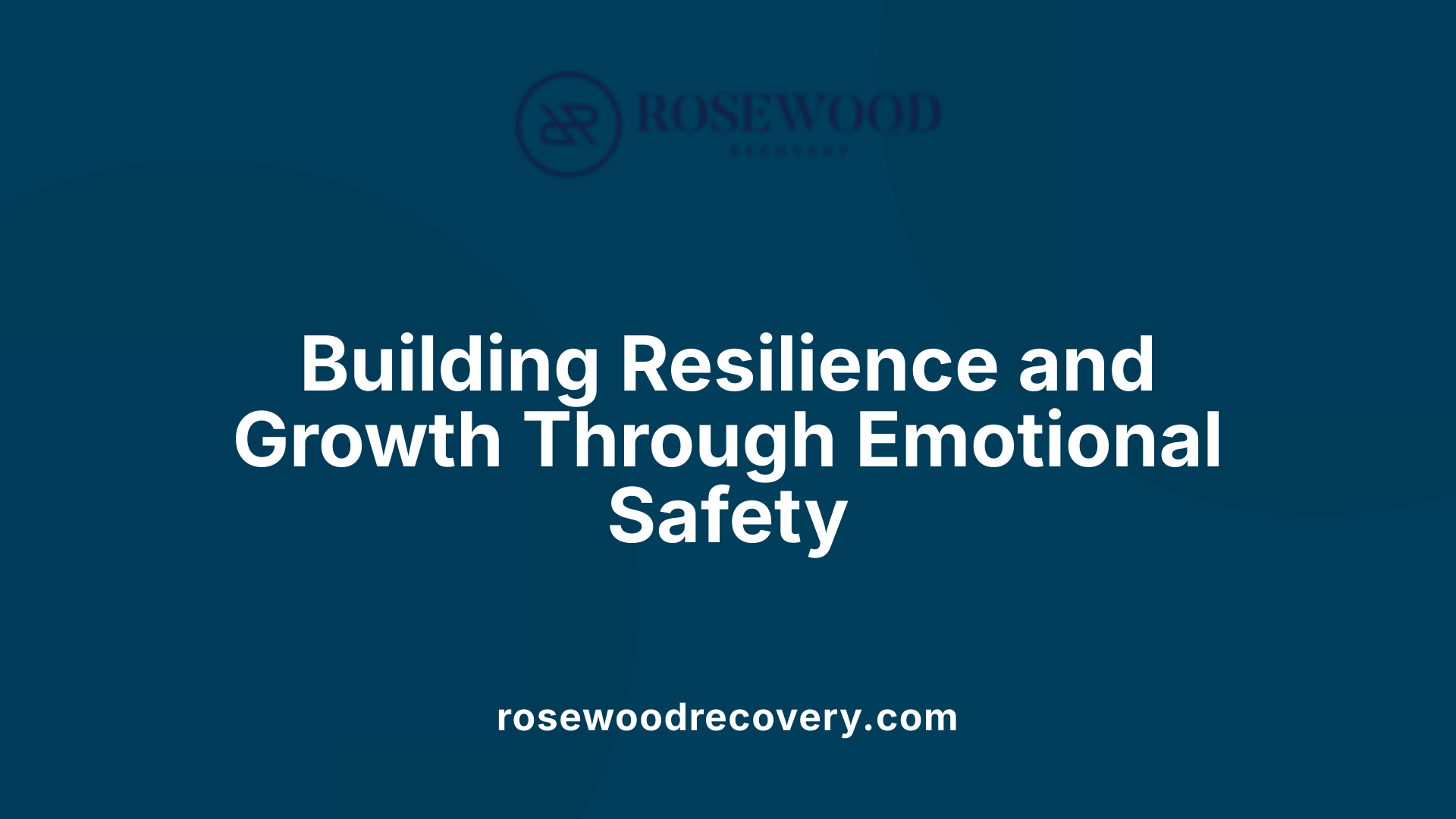
How does emotional safety contribute to post-traumatic growth and resilience?
Emotional safety plays a crucial role in nurturing resilience and enabling post-traumatic growth. It provides a secure space—both internally within oneself and externally in relationships—where individuals can feel accepted, understood, and empowered to face their traumatic experiences.
When people experience emotional safety, they are more likely to explore difficult feelings and memories without fear of judgment or rejection. This openness encourages self-vulnerability, which is essential for healing and gaining new insights from past wounds.
Furthermore, emotional safety reduces the intense psychological distress and physiological stress responses associated with trauma. It lessens feelings of isolation and helps individuals develop trust in their own resilience and in others, fostering supportive connections that bolster collective and personal healing.
Practicing self-care to strengthen internal safety—like mindfulness, emotional regulation, and body awareness—complements external efforts such as nurturing healthy relationships. These combined efforts create a foundation for overcoming adversity with adaptive coping strategies.
As a result, emotional safety facilitates the process of reflection, learning, and personal strength development. It encourages individuals to reframe their trauma experiences, recognize their growth, and find a renewed sense of purpose and meaning.
In summary, cultivating emotional safety enhances one's capacity to process trauma, mitigates ongoing distress, and promotes meaningful growth. It acts as a vital catalyst for transforming painful experiences into sources of strength and resilience.
The Unique Function of Emotional Safety in Therapies like AEDP
What are the core principles of AEDP: safety, attachment, affect regulation?
Accelerated Experiential Dynamic Psychotherapy (AEDP) is built on foundational ideas that emphasize creating a safe and supportive environment for healing. Central to AEDP are three pillars: safety, attachment, and affect regulation. Safety in therapy involves establishing trust, warmth, and reassurance, which encourages clients to open up and explore difficult emotions. Attachment theory informs AEDP's focus on fostering secure relational experiences during therapy, helping clients internalize feelings of safety and connection. Affect regulation refers to the therapist’s role in guiding clients through intense emotional states to achieve stability and emotional flow. Together, these principles create a nurturing space where clients can unlock their inner emotional world.
How does AEDP facilitate corrective emotional experiences?
A key aspect of AEDP is promoting corrective emotional experiences—therapeutic moments that counteract past relational traumas and disconnections. By providing a consistently safe and attuned environment, the therapist helps clients feel seen, understood, and validated. This process allows clients to revisit and process painful memories or emotions that were previously inaccessible or overwhelming.
Through moment-to-moment tracking and empathetic attunement, AEDP creates opportunities for clients to experience positive, affective states like joy, love, and trust. These experiences serve as emotional corrective experiences, rewiring internal models of relationships and fostering resilience. The safety established in therapy acts as a container for these vulnerable explorations, making it possible for deep healing to occur.
How does harnessing emotional safety lead to transformative change?
In AEDP, emotional safety is the gateway to profound psychological transformation. When clients feel secure enough to fully access and express their emotions, they can process unresolved wounds and develop healthier emotional regulation strategies. This safety bolsters neuroplasticity—the brain’s ability to change—allowing new, healthier patterns of thought and behavior to form.
Furthermore, emotional safety enhances the capacity for emotional experiences such as joy, gratitude, and love, which are integral to healing and growth. By gradually building a sense of safety, clients learn to trust their feelings and inner experiences, fostering greater self-compassion and resilience.
In essence, AEDP leverages emotional safety as a catalyst for awakening the innate drive to heal—'transformance'—where clients not only recover from trauma but also flourish emotionally and relationally. The safe therapeutic environment thus becomes a crucial space for authentic connection, inner exploration, and lasting transformation.
Building a Culture of Emotional Safety for Lasting Wellbeing
What is the psychology of feeling safe, and why is it essential for wellbeing?
At its core, the psychology of feeling safe revolves around both physical and emotional security. It is a fundamental human necessity that shapes how we engage with ourselves and others. When individuals perceive safety, their nervous systems relax, allowing for emotional regulation, openness, and connection.
Feeling safe enables us to trust, take risks, share vulnerability, and foster relationships that nurture growth and resilience. Conversely, when safety is compromised, the brain activates stress responses — such as fight, flight, freeze, or fawn — which can lead to anxiety, trauma symptoms, or physical health problems. This heightened state of alertness hampers emotional processing and healing.
Emotional safety involves feeling accepted and understood without judgment or threat. It provides the foundation for expressing difficult emotions, exploring inner fears, and building supportive relationships. Establishing environments that foster a sense of safety is essential for ongoing mental health and wellbeing, empowering individuals to recover from trauma, manage stress, and flourish in their personal and social lives.
How individual and societal practices promote emotional safety
Creating a culture of emotional safety requires deliberate effort at both personal and collective levels. On an individual basis, practicing self-awareness, setting healthy boundaries, and communicating openly can cultivate a sense of security.
In homes and workplaces, establishing clear boundaries, nurturing trust, and encouraging vulnerability are critical steps. For example, active listening, empathy, and acceptance help create a supportive atmosphere where people feel seen and valued.
Community settings can reinforce safety through inclusive practices, respectful dialogue, and accessible mental health resources. Schools, religious institutions, and social clubs that prioritize acceptance and understanding help bolster social bonds and resilience.
The role of cultural, relational, and policy support
Cultural norms significantly influence how safety is perceived and experienced. Societies that value openness, empathy, and mental health promote environments where emotional safety can thrive. Policies that protect against discrimination, violence, and marginalization are vital; they uphold physical safety, which underpins emotional security.
Relationally, trusted relationships with caregivers, peers, and mentors serve as protective factors, providing consistent safety cues and emotional support. Therapeutic models like AEDP and trauma-informed care emphasize creating safe spaces for healing, recognizing that safety is the foundation for emotional processing and recovery.
By integrating these practices—individual, cultural, and policy-driven—we can foster a world where emotional safety becomes a shared norm. This collective effort not only enhances personal wellbeing but also strengthens societal resilience, enabling communities to navigate challenges collectively and build lasting, trusting relationships.
| Aspect | Focus | Examples |
|---|---|---|
| Individual practices | Self-awareness, Boundaries, Honest communication | Mindfulness, active listening, vulnerability |
| Creating safe spaces | Homes, workplaces, community | Listening policies, inclusive dialogues |
| Cultural support | Norms, shared values | Celebrating diversity, compassion-centered education |
| Policy measures | Laws, protections | Anti-discrimination laws, mental health services |
Fostering emotional safety is a comprehensive effort, bridging personal behaviors, community practices, and systemic policies. When we prioritize these elements collectively, we cultivate environments where individuals and societies can thrive, heal, and grow in trust and resilience.
Harnessing Emotional Safety to Drive Lasting Healing
Creating and maintaining emotional safety is not solely the responsibility of therapists but a collective effort that spans personal relationships, workplaces, communities, and broader societal structures. Upholding safety through empathy, understanding, cultural sensitivity, and supportive policies can significantly accelerate psychological healing and foster resilience. Neurobiological insights underscore that safety regulation directly impacts the nervous system, facilitating emotional regulation, trust, and openness. Whether through somatic practices, experiential therapies like AEDP, or nurturing social bonds, prioritizing emotional safety unlocks the innate capacity for healing within every individual. Embracing the vital role of safety can transform trauma recovery, promote post-traumatic growth, and cultivate a resilient, healthier society.
References
- Why Emotional Safety Is the Foundation of Healing in Therapy
- Emotional Safety: What It Is and Why It's Important | Psychology Today
- Why we heal: The evolution of psychological healing and ...
- Emotional Safety: What It Is and How to Develop It
- Emotional and Psychological Trauma - HelpGuide.org
- Feeling Safe to Feel | CPTSDfoundation.org
- Emotional Healing and Psychotherapy | Psychology Today




